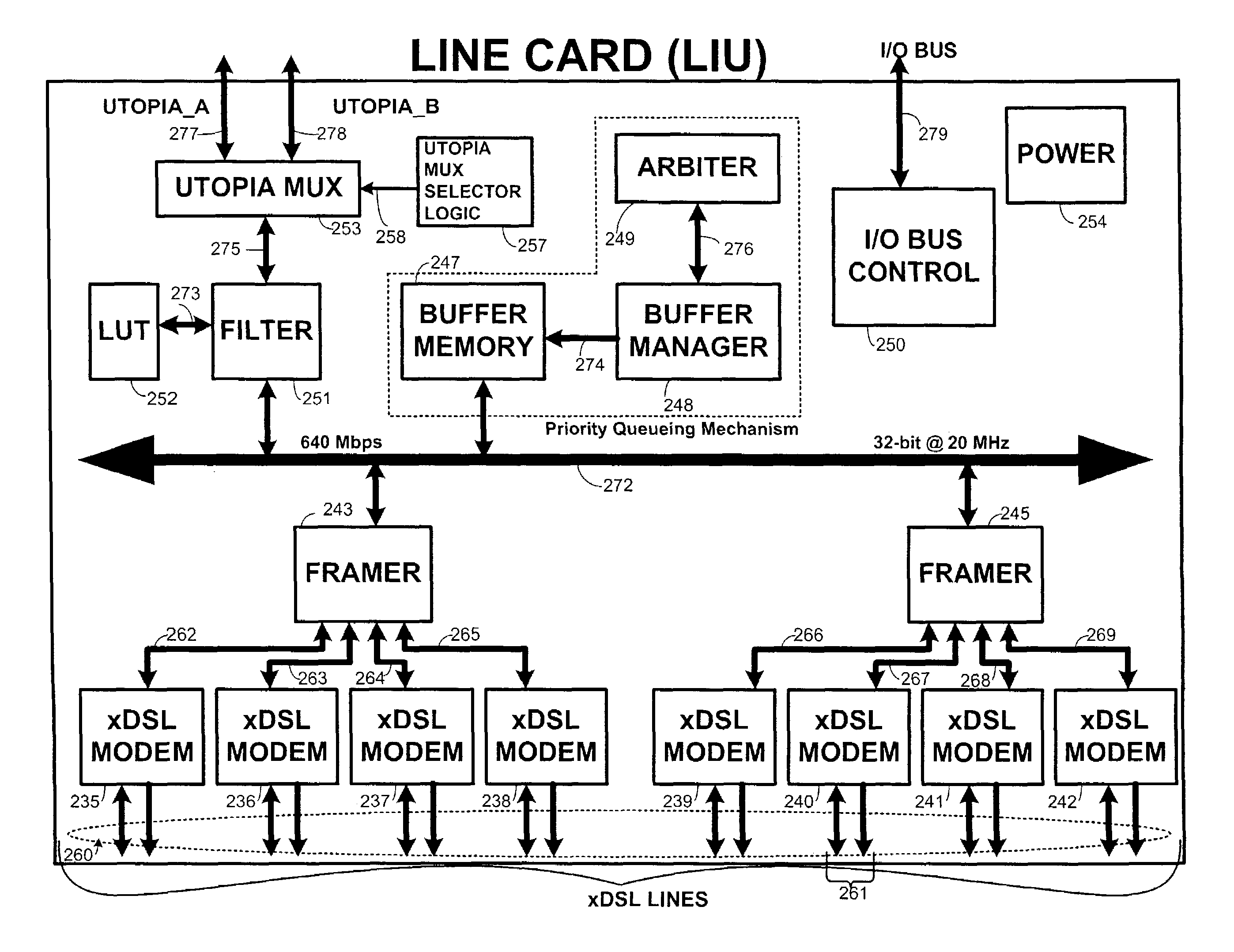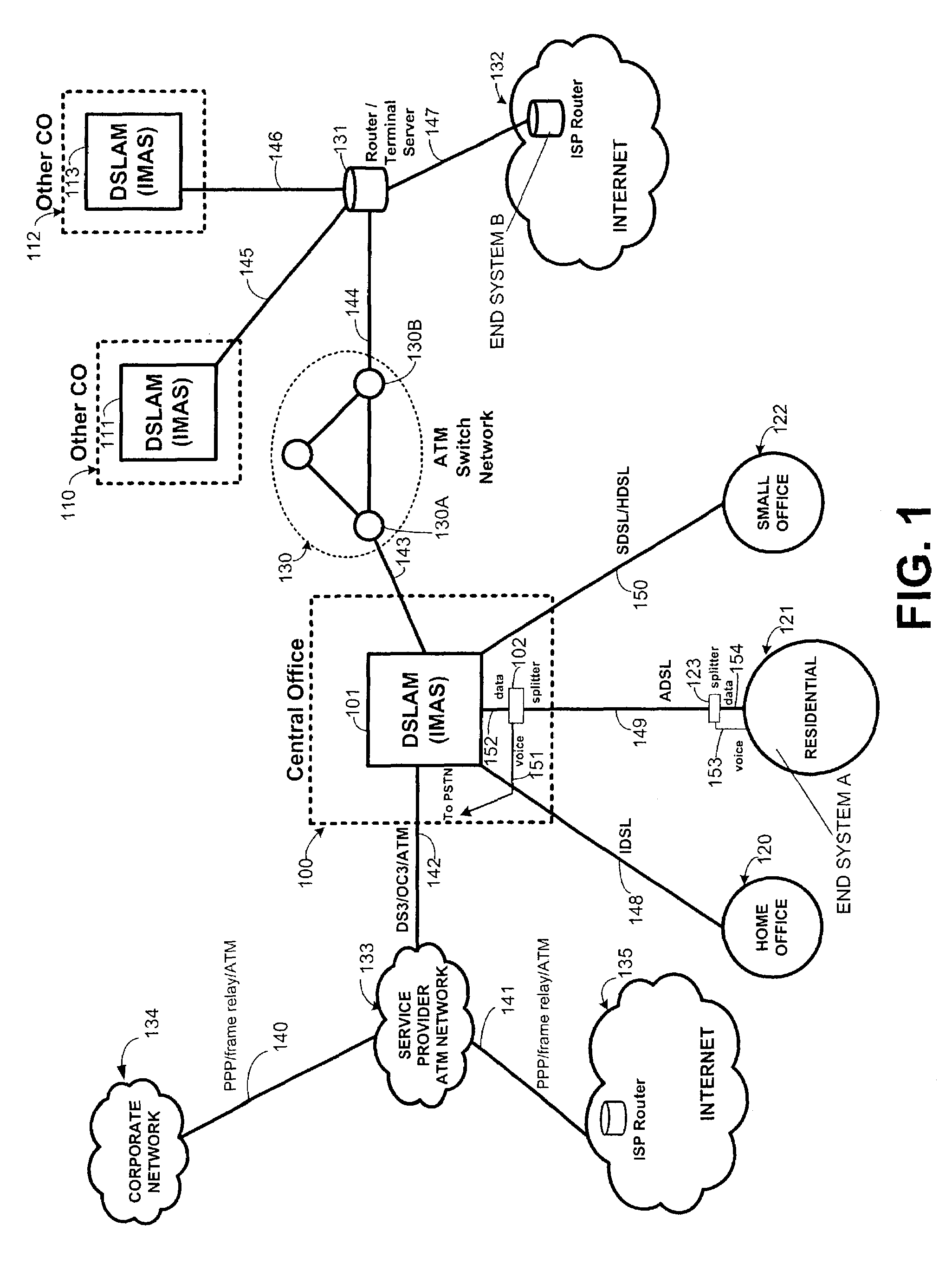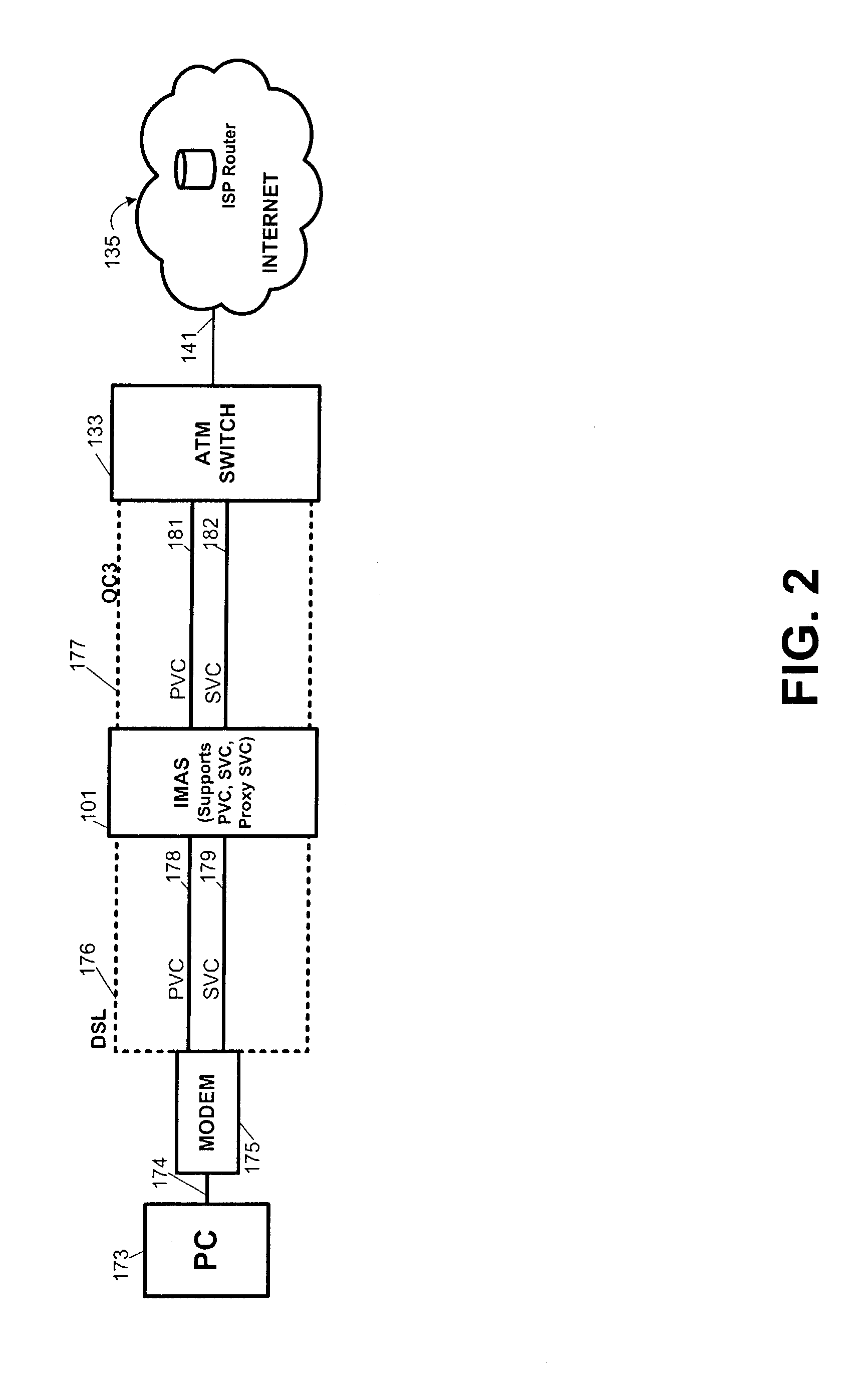SVC signaling system and method
a signaling system and signaling method technology, applied in the field of scalable network devices, can solve the problems of slow modems, inability to fully capture digital audio and video services to the satisfaction of end users, and limited bandwidth on the loop side for today's traffic needs, etc., to achieve the effect of improving performance, documentation and reporting
- Summary
- Abstract
- Description
- Claims
- Application Information
AI Technical Summary
Benefits of technology
Problems solved by technology
Method used
Image
Examples
Embodiment Construction
[0087]This patent specification is divided into five main sections:
[0088]
I.DEFINITIONSII.SYSTEM ARCHITECTUREIII.HARDWAREIV.SOFTWAREV.GLOSSARY OF ACRONYMS
[0089]A short preface which provides some general definitions precedes the SYSTEM ARCHITECTURE section and a GLOSSARY OF ACRONYMS follows the SOFTWARE section. This organization is intended to enhance the readability and understanding of the various embodiments of the present invention, rather than limiting the scope of the present invention. The various embodiments of the present invention encompass the whole spectrum of inventive concepts described herein, including the macro-level network architecture (and process), to the mid-level DSLAM itself, and the micro-level circuit implementations.
I. Definitions
[0090]Although definitions of particular terms will be provided during the course of the patent specification, certain terms are worth mentioning at the outset because of their use throughout the document.
[0091]The telecommunicati...
PUM
 Login to View More
Login to View More Abstract
Description
Claims
Application Information
 Login to View More
Login to View More - R&D
- Intellectual Property
- Life Sciences
- Materials
- Tech Scout
- Unparalleled Data Quality
- Higher Quality Content
- 60% Fewer Hallucinations
Browse by: Latest US Patents, China's latest patents, Technical Efficacy Thesaurus, Application Domain, Technology Topic, Popular Technical Reports.
© 2025 PatSnap. All rights reserved.Legal|Privacy policy|Modern Slavery Act Transparency Statement|Sitemap|About US| Contact US: help@patsnap.com



